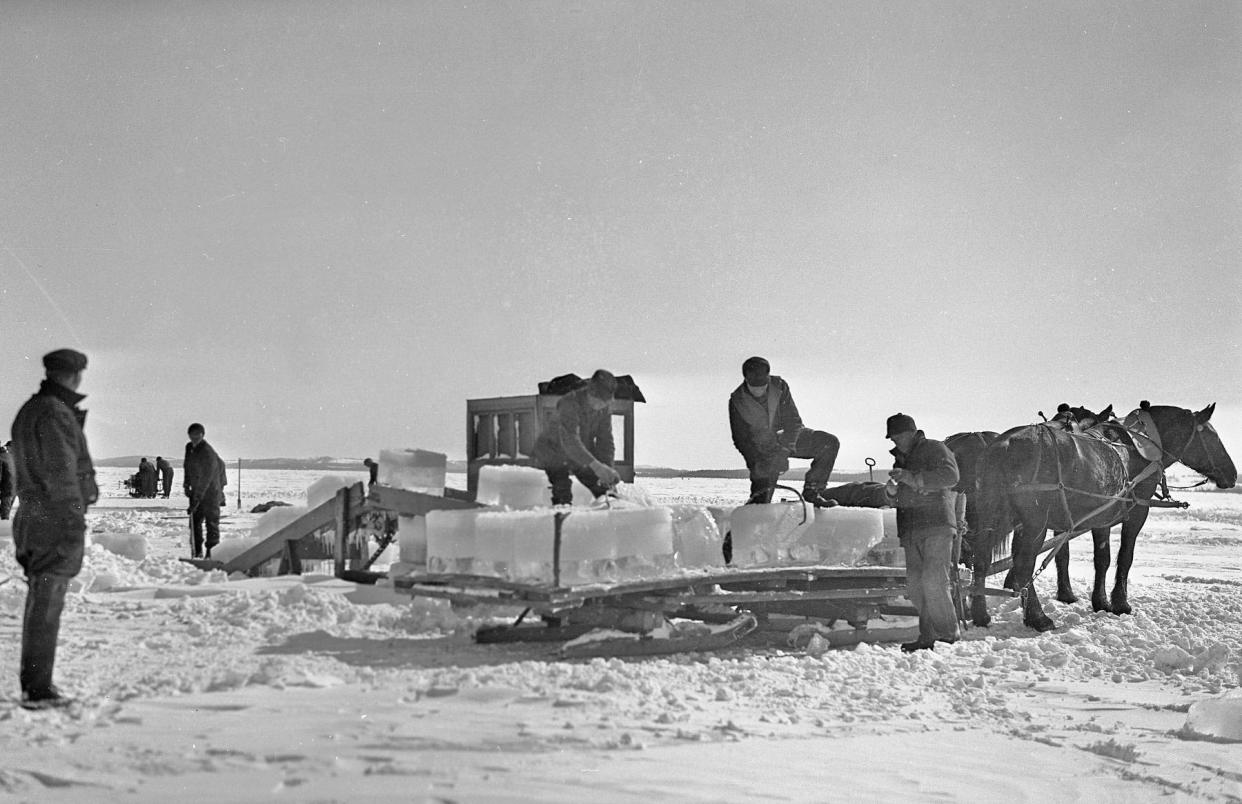Looking back: They don't print 'em like they used to

When this column, or sometimes any activity needing research at the Charlevoix Historical Society, is being prepared, the information gathered is made available by the Charlevoix Public Library’s online local newspaper files that date back to 1869. That is the year when the town’s first paper, the Charlevoix Sentinel was established, in April.
At the time, much of the Sentinel arrived pre-composed on prefabricated sheets of metal that contained most of the paper’s contents. Only a few areas had to be filled in here. Two of the six front-page columns, on the left side, were devoted to very small ads. The far left column, at the fold, was local, thus that advertising’s type needed to be handset by editor/publisher Willard A. Smith; some of the next columns had already been prepared, much of it mail order offerings from as far away as New York City, filled at the bottom by more local ads. Most often, the remaining four columns were taken up with serialized fiction, plus a miscellany of other items.
For instance, one hundred fifty years ago, the March 15, 1873, Sentinel featured, at the top of column three, a memory refresher headlined “Poetry. England’s Sovereigns. [Commit the following to memory, and you will have at your ‘tongue’s end’ the names of the Monarchs of England from the time of the conquest down to the present date].”
Then, in twelve long lines, followed “First William the Norman” and the names of every British monarch to when “God sent them Victoria, the youngest and last.” Handy to have around when you need it. The remaining column, all of column four, and most of column five were devoted to the first three chapters of a serialized “The Mason’s Child.” Chapter 1 began: “Faster and faster spread the flames, and now the ship was enveloped in a fiery sheet. Men and women rushed madly over the side to meet a quicker but less painful death." From then on, you were hooked by yet one more Victorian-era tearjerker and couldn’t wait until the next week’s chapters arrived.
Subscribe:Get all your breaking news and unlimited access to our local coverage
Then, at the end of column five into column six, appeared lengthy news of a British ship rammed and sunk off the Mediterranean coast of Spain, the late French emperor Napoleon III’s big plans before he died the previous January, a description of a prank pulled in a Syracuse (New York, presumably) clothing store, the front page ended with “A bandbox, containing a lady’s hat, with velvet trimming, plume and all, was sent lately from Belfast, Maine, to California by mail, the postage being eleven cents.” The rest of the four-page paper was much of the same, with only two columns, sometimes a little more, on page three devoted to local and area news items.
They don’t print ‘em like they used to.
Fifty years later, the March 14, 1923, Charlevoix Courier reported the huge harvest of ice taken from the lake waters.
“ANNUAL ICE HARVEST IS REAPED. Cut Totals 28,000 Tons And Is Thickest Ever Known Here. The annual ice harvest of Charlevoix has been completed. The intense cold of the last two months helped wonderfully in the quality and thickness of this year’s crop of clear, thick ice, which tested absolutely pure as taken from Pine Lake (Lake Charlevoix, officially named as such three years later).
“Eighteen teams and forty men worked twenty-one days cutting, hauling and storing twenty-eight thousand tons of the commodity in such demand during the summer season. The ice harvested was twenty-three inches thick and each cake weighed two hundred and twenty-five pounds, the thickest clear ice ever cut in the history of this region.
“The numerous summer hotels (all local) were supplied, including the Inn (250 rooms at the east end of Dixon Avenue), the Hallett House (on Belvedere Avenue next to a future Grey Gables), the Belvedere (corner of Ferry and Belvedere Avenues), and the Chicago Club (resort clubhouse/hotel across the street from The Inn). The local dealers, Harry Widdifield and Heise & Yettaw, also stored their (ice warehouses).
“Owing to the quality and abundance of the ice, the contractor, Mr. Hammond, shipped a large quantity of freight to Petoskey. No matter what the demand may be, no shortage is anticipated in Charlevoix this summer.”
Also in the same edition appeared a big ad for the high school junior class play, the Extravagant, Magnificent, Stupendous, Monstrous, Laugh-Provoking Extravaganze “A Merchant of Charlevoix from old Bill Shakespeare’s ‘Merchant of Venice.’ You’ll laugh or bust at the Junior Play.” An article described how the production had been shut down by the flu, both students and director. But “from all accounts and the rumors that have been floating around, this home-talent comedy is going to be a ‘lolla-paloosa’ and everyone who is able to walk or crawl, with or without crutches, ought to be on hand to give our budding dramatists a rousing send-off, as they have worked hard and deserve it. Besides, nobody will want to miss the fun.”
It would be interesting to learn exactly how a Charlevoix merchant would fit into a Shakespearean comedic scenario based on a serious theme.
This article originally appeared on The Petoskey News-Review: In 1869, Charlevoix's first newspaper arrived to the editor pre-composed on prefabricated sheets of metal

